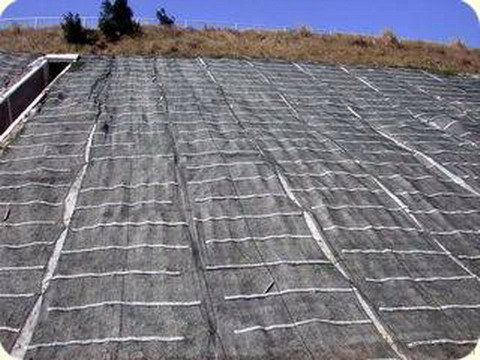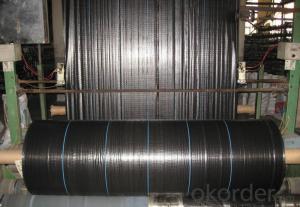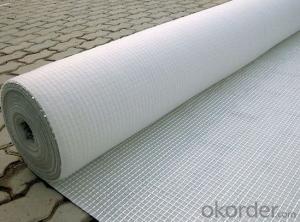Capa De Geotextil Anti Weed Fabric Mat Woven Geotextile
- Loading Port:
- Qingdao
- Payment Terms:
- TT OR LC
- Min Order Qty:
- 10000 m²
- Supply Capability:
- 500000 m²/month
OKorder Service Pledge
OKorder Financial Service
You Might Also Like
Product Description
The weed control mat is made of environmentally friendly raw materials, pp woven fabric. It used to prevent the growth of weed, without the use of potentially dangerous chemical sprays or labor intensive hoeing. Once installed, weed mat will continue providing protection for years without maintenance.
They are permeable fabrics, which allow air, water and nutrients to pass through, and designed to block out the sun to reduce photosynthesis and stop weed growth.
Specification
ROPERTY | ASTM TEST METHOD | Minimum Average | Minimum Average |
Mass per unit Area | ASTM D-5261 | 3.0 oz/yd2 | 100 g/m2 |
Grab Tensile | ASTM D-4632 | 145 lbs | 660 N |
Grab Elongation | ASTM D-4632 | 15% | 15% |
Trapezoid Tear | ASTM D-4533 | 55 lbs | 245 N |
Water Flow Rate | ASTM D-4491 | 5 gal/min/ft2 | 203 L/min/m2 |
UV Resistance | ASTM D-4355 | 70% @ 500 hrs | 70% @ 500 hrs |
ROLL DIMENSIONS | |||
Roll Width | 0.9m (3’) | 1.8m (6') | 2.7m (9') |
Roll Length | 91.4m (300’) | ||
Roll Weight | 8kgs (17lbs) | 16kgs (34lbs) | 24kgs (52bs) |
Features
1. Weed suppressant and drainage control landscaping fabric
2. Easy to use, Environmentally friendly
3. Allows water, air and nutrients through, suppressing weeds without the use of chemicals
4. Reduces the level of watering required due to the slower rate of water evaporation
Application
1. Excellent Weed Control
2. Moisture, fertilizers, air reach plants to allow for healthy soil
3. Good water and air permeability
4. Exceptional toughness and strength
5. Durable, tear-resistant; won't rot or mildew
6. Lightweight, easy to install, follows natural ground contours
7. Ideal for use in landscaped beds, under decks and walkways.
Packaging & Delivery
| Packaging Details: | Packed In Roll Or In Bales Or Cartons Or According To Customers Requirement |
| Delivery Detail: | 20 Days After Order Confirmed |


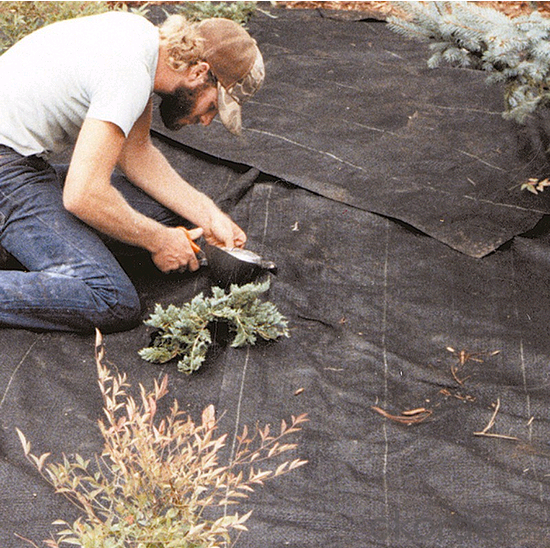

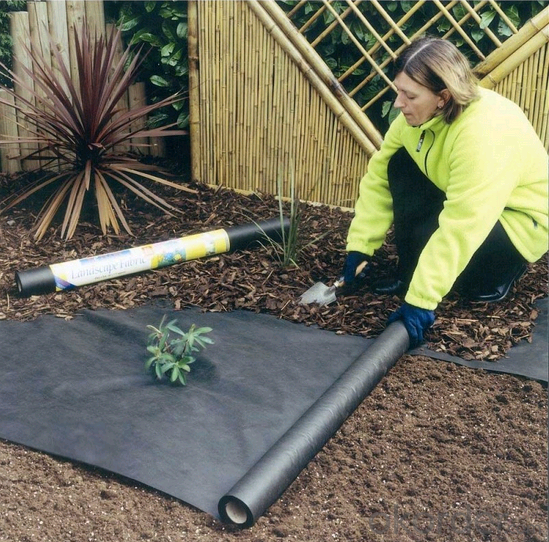
FAQ
1, Samples Policy
Samples are free, but the freight is on customers' charge
Samples will usually be sent out in one day.
2, Prices
As for the prices, we need you to provide us weight, color, width and usage so that
we can quote you best.
3, How to place an order?
Inquiry
Reply
Sample
Contract
Receiving deposit& production
Testing& Packing
Delivery
Receiving
- Q: What are the specifications for geotextiles used in erosion control mats?
- The specifications for geotextiles used in erosion control mats typically include factors such as the material composition, weight, tensile strength, permeability, and UV resistance. These geotextiles are designed to provide effective erosion control by stabilizing soil, preventing sediment runoff, and promoting vegetation growth.
- Q: Is the current tunnel construction, modular waterproof board (geotextile) is available?
- Geotextiles generally do not design applications in tunnel waterproofing. Because he can not meet the requirements of tunnel waterproofing
- Q: Geomembrane bag bag is geomembrane or geotextile
- Geomembrane bags from the upper and lower layers is made of geotextile fabric, not geomembrane and geotextile, mainly used in the investigation of gong Guangqie chie off the locust Guiwei with slope, go to do the river on the use of (Hehe environmental geomembrane bag )good results
- Q: Are geotextiles resistant to UV radiation?
- Yes, geotextiles are typically designed to be resistant to UV radiation. They are often made from materials that have UV stabilizers or are treated with UV-resistant coatings, ensuring their durability and longevity when exposed to sunlight.
- Q: Can geotextiles be used for reinforcement of canal banks?
- Yes, geotextiles can be used for reinforcement of canal banks. Geotextiles are commonly employed in civil engineering projects to enhance the stability and strength of soil and structures. In the case of canal banks, geotextiles can be used to control soil erosion, improve drainage, and provide reinforcement against potential slope failures. They are effective in distributing loads, reducing soil movement, and preventing the loss of fine particles, which ultimately helps in maintaining the integrity and stability of canal banks.
- Q: What is the meaning of the geotextile What is its working principle
- Hot geotextile cloth is to isolate the heat and cover a layer of geotextile material. Advantages: light weight, the overall continuity is good, high tensile strength, corrosion resistance, anti-microbial erosion is good, easy construction. Non-woven geotextile properties: small pore diameter, good permeability, soft texture, and soil with a good combination. 2, construction (1) according to the embankment or base wide full section laying. (2) leave sufficient anchorage length on each side of the embankment or substrate. (3) To ensure integrity, when the lap method is continuous, the lap length should be 0.3 ~ 0.5m. When the seam is connected, the bond width is not less than 50mm. (4) site construction, material damage must be immediately repaired. Upper and lower seams should be alternately staggered, staggered length of not less than 0.5m. (5) try to avoid prolonged exposure.
- Q: Detailing the geotextile standard which, how to apply their own
- Detailing the geotextile standard which, how to apply their own
- Q: Can geotextiles be used in stormwater management applications?
- Yes, geotextiles can be used in stormwater management applications. Geotextiles are commonly employed in stormwater management systems to control erosion, filter pollutants, and promote water infiltration. They provide an effective solution for sediment control, soil stabilization, and reducing the impact of stormwater runoff on the environment.
- Q: How do geotextiles enhance the performance of geocells?
- Geotextiles enhance the performance of geocells by providing additional reinforcement and stabilization to the soil within the geocell structure. They act as a barrier, preventing soil erosion and promoting better load distribution. Geotextiles also help to filter and drain water effectively, improving the overall drainage system of the geocell and increasing its durability and long-term performance.
- Q: Road overhaul of the original concrete pavement after shaving asphalt, anti-cracking is geotextile or geogrid more
- Generally used in the geotextile, generally used in soft foundation reinforcement treatment; slope protection; road anti-reflective crack structure layer; drainage system; green belt
Send your message to us
Capa De Geotextil Anti Weed Fabric Mat Woven Geotextile
- Loading Port:
- Qingdao
- Payment Terms:
- TT OR LC
- Min Order Qty:
- 10000 m²
- Supply Capability:
- 500000 m²/month
OKorder Service Pledge
OKorder Financial Service
Similar products
Hot products
Hot Searches
Related keywords







